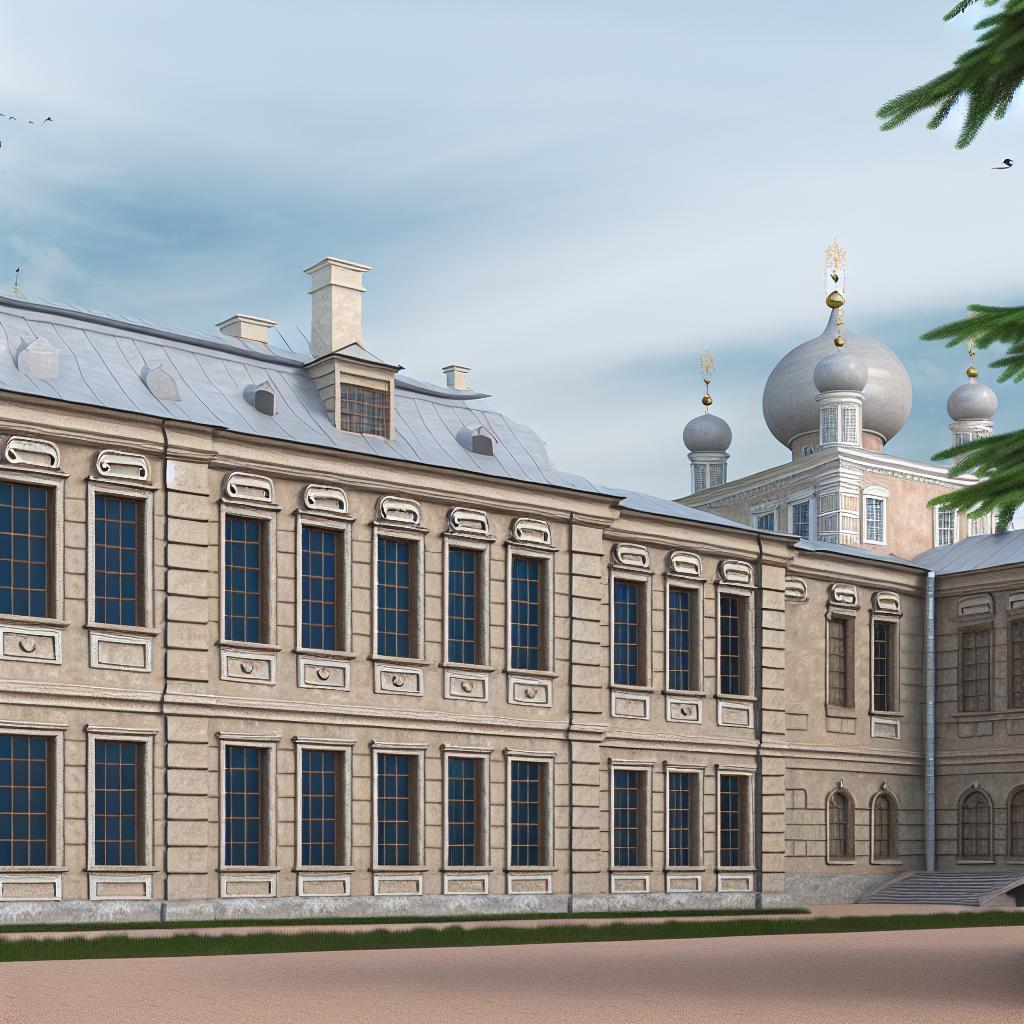Overview of Shuvalov Palace
The Shuvalov Palace, situated in the heart of St. Petersburg, Russia, stands as a venerable symbol of Russian neoclassical architecture. Nestled along the Fontanka River, this stately edifice, completed in the 19th century, has navigated through various significant phases in its history, reflecting the evolving nature of its function and design.
Architectural Features
Conceived by distinguished architects of the era, Shuvalov Palace is an epitome of architectural elegance. It brilliantly intertwines late Baroque and early classical architectural elements, creating a cohesive visual narrative that exudes sophistication and elegance. The palace’s exterior is marked by its ornate detailing and symmetrical layouts, elements that epitomize the architectural trends prevalent during its construction.
The façade is an embodiment of regality, adorned with majestic columns and intricate stucco work. The attention to detail showcases the prowess of the architects and artisans who contributed to its design, forming a visual metaphor for the grandeur and opulence of aristocratic residences of that period. This architectural style not only reinforces the palace’s status as an architectural marvel but also as a historical emblem of Russian aristocracy.
Interior Design
The splendor of Shuvalov Palace extends beyond its grand exterior into its meticulously designed interior spaces. Each room within the palace is a masterpiece, showcasing the rich artistry and craftsmanship of the time. One of the most impressive features of the palace’s interior is its luxurious ballrooms. These grandiose spaces have been the venue for a myriad of esteemed gatherings and events over the years.
The sumptuous ballrooms are characterized by their opulent chandeliers, frescoes, and antique furnishings, each contributing to the creation of a lavish atmosphere. The intricate frescoes that decorate the ceilings and walls evoke scenes of historical and mythological significance, further imbuing the space with an aura of cultural richness and intellectual depth.
Historical Significance
Shuvalov Palace bears witness to a rich tapestry of historical narratives, having been owned originally by the prominent Shuvalov family. Over the centuries, the palace has played crucial roles during various epochs of Russian history. Its halls have hosted numerous diplomatic events and state receptions, serving as a backdrop for the forging of critical political ties and alliances.
In the turbulent years of the Soviet era, the palace was adapted to meet governmental and public needs. This transitional phase reflects the broader socio-political changes occurring in the country, with the palace continuously adapting to the demands of the times while retaining its intrinsic cultural and historical value.
Current Use
The contemporary chapter in Shuvalov Palace’s history is marked by its transformation into the Fabergé Museum. This significant development has repurposed the palace into a cultural beacon, dedicated to showcasing the works of the illustrious jeweler, Peter Carl Fabergé. The museum’s collection is nothing short of extraordinary, featuring the famed Imperial Fabergé Eggs, among other exquisite artifacts.
This transformation has breathed new life into the palace, turning it into a magnet for both local and international visitors. The infusion of historical architecture with modern cultural exhibits provides visitors with an enriching experience, serving as a bridge connecting past artistry with present creative endeavors.
The Shuvalov Palace thus emerges as not merely a historical structure but as a dynamic cultural institution, encapsulating the essence of Russian history and the arts. Its continued relevance today underscores the timeless appeal of its architectural brilliance and the enduring significance of its cultural contributions. Visitors to the palace not only engage with its rich past but also with the vibrant tapestry of art and culture it continues to celebrate.

